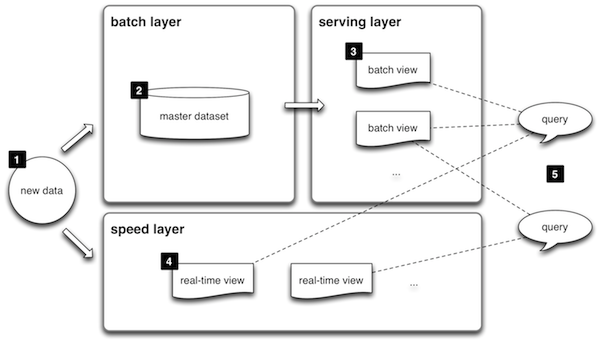Basics (Lambda Architecture)
What is data system
Data system answers questions based on current and past data
query = function(all data)
Querying on huge dataset will take longer time so Lambda Architecture defines a consistent approach to meet the latency requirements
Properties
- Robustness and fault tolerance
- Low latency reads and updates
- Scalability
- Extensibility
- Minimal maintenance
Fully incremental approach
- Database should support updates (Data compaction consumes high CPU usage)
- Extreme complexity of achieving eventual consistency
- Lack of human-fault tolerant database might result in corrupted state
Design

- All data entering the system is dispatched to both the batch layer and the speed layer for processing.
- The batch layer has two functions:
- managing the master dataset (an immutable, append-only set of raw data)
- To pre-compute the batch views.
- The serving layer indexes the batch views so that they can be queried in low-latency, ad-hoc way.
- The speed layer compensates for the high latency of updates to the serving layer and deals with recent data only.
- Any incoming query can be answered by merging results from batch views and real-time views.
Design web analytics
Going forward we will try to build a web analytics which will support the following queries
- Number of page views given a URL and time range
- Unique visitors with in a given time range
- Bounce Rate : Percentage of people visit the page without visiting any other pages